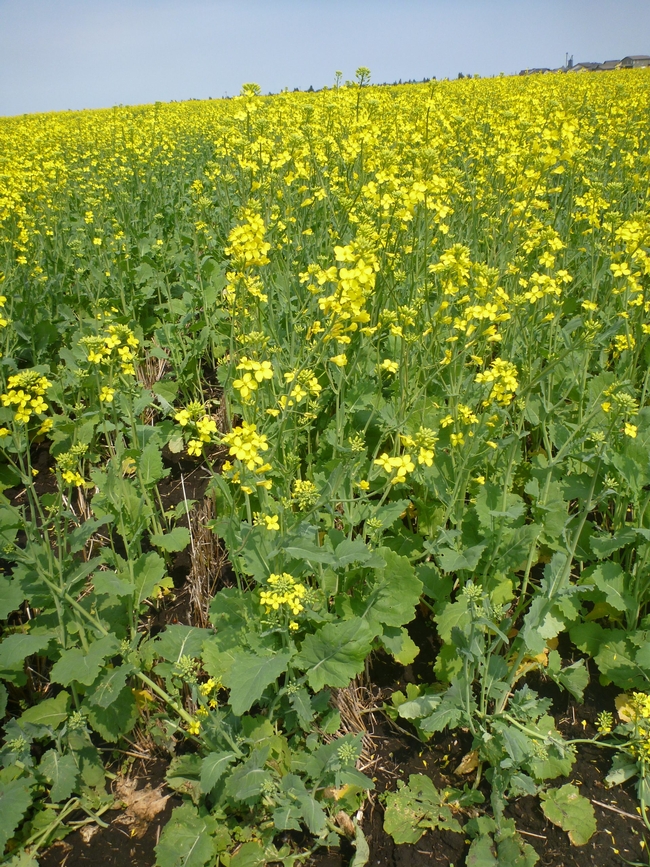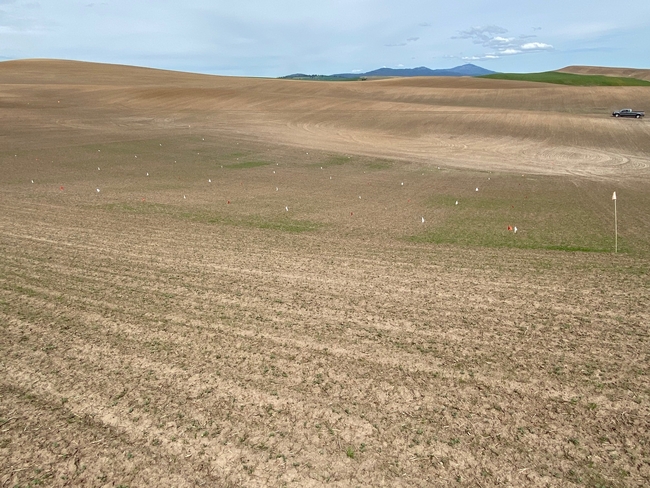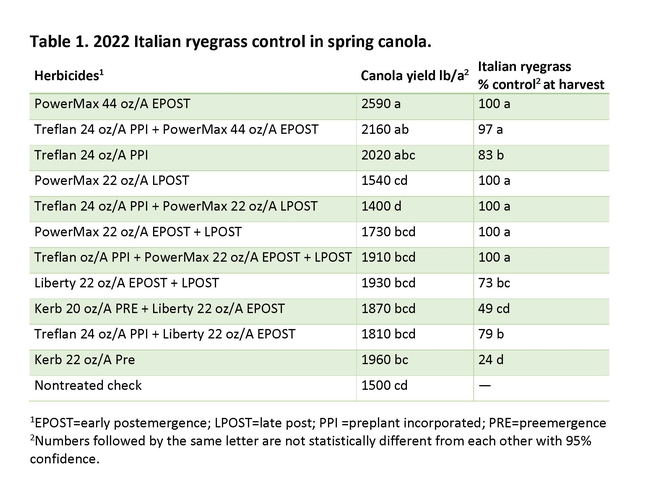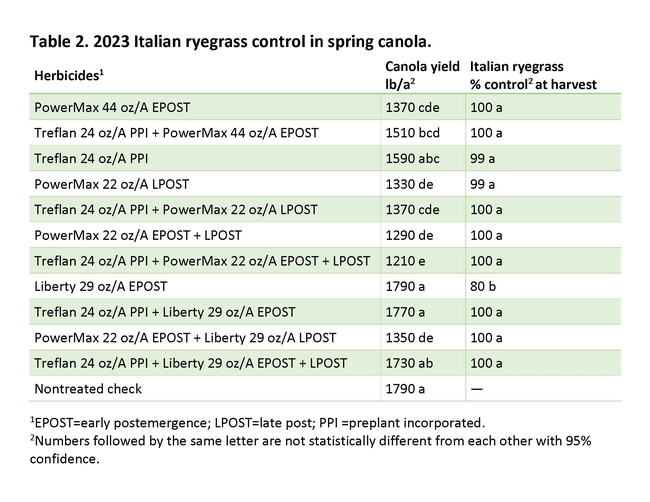
Over the past two years (2022 and 2023), we conducted field studies to evaluate the benefits of using herbicides with different modes of action, both with and without glyphosate, for the control of Italian ryegrass in glyphosate-resistant spring canola. We found that glyphosate (Roundup PowerMax) provided excellent control of Italian ryegrass applied alone or in combination with other herbicides. The use of trifluralin (Treflan HFP) applied preplant incorporated or the early postemergence application of glufosinate (Liberty) reduced the number of Italian ryegrass plants that were subsequently treated with glyphosate. The fewer plants you treat with glyphosate or any other herbicide, the lower the chance for selecting an individual or individuals with resistance to glyphosate. Consequently, the use of trifluralin or glufosinate for weed control in glyphosate-resistant spring canola can potentially extend the useful life of glyphosate-resistant spring canola for Italian ryegrass control.
Despite the good news on weed control, we observed a yield reduction with some of the glyphosate applications in both years. In 2022, the greatest Italian ryegrass control resulted from applications of Roundup PowerMax, which provided nearly 100% control at harvest (Table 1). Applications of Roundup PowerMax were so effective in controlling Italian ryegrass that it was difficult to see added control from Treflan HFP. The early Roundup PowerMax application (3-4 leaves) of 44 oz/A resulted in the highest canola yield of 2590 lb/A. All late postemergence Roundup PowerMax applications (6-leaf to bolting) delayed flowering and reduced yield.
In 2023, a year with a low density of Italian ryegrass (the result of a delayed replanting), all treatments except Liberty applied alone early postemergence provided excellent control of Italian ryegrass (Table 2). Without the competition provided by a high density of Italian ryegrass, we were able to observe a reduction in canola yield with all treatments containing Roundup PowerMax. It did not matter if the Roundup PowerMax was applied early or late postemergence or at a rate of 22 or 44 oz/A. We are unsure if this is a problem unique to the TruFlex spring canola varieties we used (Invigor LR344PC and Invigor LR345PC) or if it should be a concern for all Roundup Ready spring canola varieties. Further research is needed to better understand the yield drag associated with the use of glyphosate in Roundup Ready spring canola.
In the meantime, growers should be aware of this potential yield drag in glyphosate-resistant spring canola. The yield drag appears to be partially the result of a delay in plant development and flowering. This delay often results in increased heat and drought stress during flowering, which reduces yield. Growers are encouraged to avoid late planting of glyphosate-resistant canola varieties; however, if late planting is necessary, growers should consider not applying glyphosate and possibly further delaying crop maturity. Late planting may allow control of major Italian ryegrass flushes before planting, thus reducing in-crop infestations. Growers are encouraged to consider the use of a preplant herbicide such as trifluralin or ethalfluralin (Sonalan HFP) prior to an early postemergence application of glyphosate to reduce selection pressure for glyphosate-resistant Italian ryegrass biotypes.
Drew Lyon is an Endowed Chair and Professor in the Department of Crop and Soil Sciences at the Washington State University.
Original source: Weeders of the West blog :: Nov. 22, 2023


